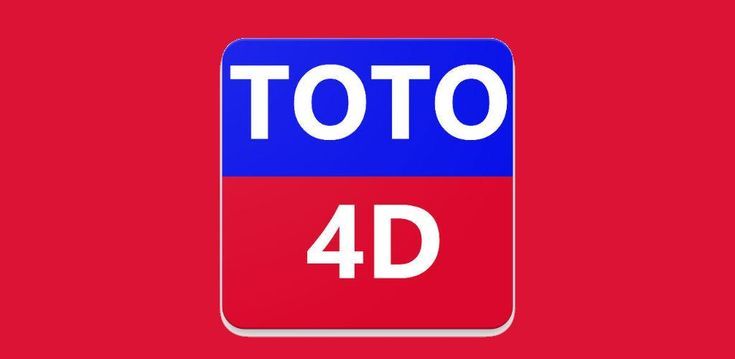The previous allowance method directly estimated the bad debt expense based on the credit sales recorded on the income statement of the business. The journal entry for the Bad Debt Expense increases (debit) the expense’s balance, and the Allowance for Doubtful Accounts increases (credit) the balance in the Allowance. The allowance for doubtful accounts is a contra asset account and is subtracted from Accounts Receivable to determine the Net Realizable Value of the Accounts Receivable account on the balance sheet. In the case of the allowance for doubtful accounts, it is a contra account that is used to reduce the Controlling account, Accounts Receivable. The allowance for doubtful accounts is a general ledger account that is used to estimate the amount of accounts receivable that will not be collected. A company uses this account to record how many accounts receivable it thinks will be lost.
Historical Percentage Method
The allowance method complies with the matching principle as an estimate of the bad debt expense is recorded in the same accounting period in which the credit sales and accounts receivable are recorded. This is in contrast to the direct contra account write-off method which records the bad debt expense when the amount is identified as irrecoverable which might be a completely different period from when the original sale was recorded. Based on this calculation the allowance method estimates that, of the credit sales of 65,000, an amount of 1,625 will become uncollectible at some point in the future. Using the allowance method, complying with the matching principle, the amount is recorded in the current accounting period with the following percentage of credit sales method journal.
Heating and Air Company
This matching principle provides readers of financial statements with a clearer insight into the actual profitability tied to those sales, fostering transparency and accuracy in assessing a company’s performance. The income statement method (also known as the percentage of sales method) estimates bad debt expenses based on the assumption that at the end of the period, a certain percentage of sales during the period will not be collected. The estimation is typically based on credit sales only, not total sales (which include cash sales).
Further details of the use of this allowance method can be found in our aged accounts receivable tutorial. This entry increases the cash balance by $2,000 and replenishes the allowance for doubtful accounts by the same amount, reflecting the recovery of the previously written-off debt. And with this, the total amount of uncollectable accounts appears in the reserve account for financial reporting purposes. When it comes to the direct write-off method, all the bad debts of the organizations are charged to the expense account. So, any provision in the accounting record is added back to calculate the taxable income.
What is the Allowance Method?
Over time since an invoice was written off, a customer may unexpectedly pay an invoice. In such a case, the process is reversed, and accounts receivable are reinstated to be treated like a normal debtor collection. Moreover, when an organization creates an allowance for bad debts, they are considered expenses. Bad Debt Expense increases (debit), and Allowance for Doubtful Accounts increases (credit) for $22,911.50 ($458,230 × 5%). Let’s say that on April 8, it was determined that Customer Robert Craft’s account was uncollectible in the amount of $5,000.
The sales method applies a flat percentage to the total dollar amount of sales for the period. For example, based on previous experience, a company may expect that 3% of net sales are not collectible. If the total net sales for the period is $100,000, the company establishes an allowance for doubtful accounts for $3,000 while simultaneously reporting $3,000 in bad debt expense. The allowance method for accounting uses mechanics that consist of debiting bad debt expenses and crediting the allowance for doubtful accounts at the beginning of the process.
The bad debt expense is then the difference between the calculated allowance for doubtful accounts at the end of the account period and the current allowance for doubtful accounts before adjustment. Creating reserves for credit sales in the same accounting period is a more logical approach that satisfies the matching concept of accounting. You may notice that all three methods use the same accounts for the adjusting entry; only the method changes the financial outcome. Also note that it is a requirement that the estimation method be disclosed in the notes of financial statements so stakeholders can make informed decisions. Allowance for Doubtful Accounts decreases (debit) and Accounts Receivable for the specific customer also decreases (credit). Allowance for doubtful accounts decreases because the bad debt amount is no longer unclear.
Shaun Conrad is a Certified Public Accountant and CPA exam expert with a passion for teaching. After almost a decade of experience in public accounting, he created MyAccountingCourse.com to help people learn accounting & finance, pass the CPA exam, and start their career. By a miracle, it turns out the company ended up being rewarded a portion of their outstanding receivable balance they’d written off as part of the bankruptcy proceedings. Of the $50,000 balance that was written off, the company is notified that they will receive $35,000.
What is the allowance method?
In this example, assume that any credit card sales that are uncollectible are the responsibility of the credit card company. It may be obvious intuitively, but, by definition, a cash sale cannot become a bad debt, assuming that the cash payment did not entail counterfeit currency. With this method, accounts receivable is organized into categories by length of time outstanding, and an uncollectible percentage is assigned to each category.
The alternative to the allowance method is the direct write-off method, under which bad debts are only written off when specific receivables cannot be collected. This may not occur until several months after a sale transaction was completed, so the entire profitability of a sale may not be apparent for some time. The direct write-off method is a less theoretically correct approach to dealing with bad debts, since it does not match revenues with all applicable expenses in a single reporting period.
Accounts receivable represent amounts due from customers as a result of credit sales. Unfortunately for various reasons, some accounts receivable will remain unpaid and will need to be provided for in the accounting records of the business. As of January 1, 2018, GAAP requires a change in how health-care entities record bad debt expense. Before this change, these entities would record revenues for billed services, even if they did not expect to collect any payment from the patient.
- Let’s say that on April 8, it was determined that Customer Robert Craft’s account was uncollectible in the amount of $5,000.
- The estimation is typically based on credit sales only, not total sales (which include cash sales).
- Therefore, it can assign this fixed percentage to its total accounts receivable balance since more often than not, it will approximately be close to this amount.
- Note that allowance for doubtful accounts reduces the overall accounts receivable account, not a specific accounts receivable assigned to a customer.
- Then, it aggregates all receivables in each grouping, calculates each group by the percentage, and records an allowance equal to the aggregate of all products.
For example, if the company wanted the deduction for the write-off in 2018, it might claim that it was actually uncollectible in 2018, instead of in 2019. Accounts use this method of estimating the allowance to adhere to the matching principle. The matching principle states that revenue and expenses must be recorded in the same period in which they occur. Therefore, the allowance is created mainly so the expense can be recorded in the same period revenue is earned. Though the Pareto Analysis can not be used on its own, it can be used to weigh accounts receivable estimates differently.
The allowance method for bad debts ensures a realistic portrayal of profitability by aligning bad debt expenses with the corresponding sales within the same reporting period, adhering to the matching principle in accounting. Consequently, stakeholders gain a clearer understanding of a company’s actual financial position, aiding in informed decision-making, prudent financial planning, and effective risk management. Regardless of company policies and procedures for credit collections, the risk of the failure to receive payment is always present in a transaction utilizing credit. Thus, a company is required to realize this risk through the establishment of the allowance for doubtful accounts and offsetting bad debt expense. In accordance with the matching principle of accounting, this ensures that expenses related to the sale are recorded in the same accounting period as the revenue is earned.
In this case an asset (accounts receivable) has been reduced by the credit entry, and a contra asset account (allowance for doubtful accounts), is also reduced by the corresponding debit entry. The company now has a better idea of which account receivables will be collected and which will be lost. For example, say the company now thinks that a total of $600,000 of receivables will be lost.
By establishing a reserve based on historical data, customer risk assessments, and current economic conditions, businesses can more accurately reflect their financial health. As for the sale or service, the income statement will report the bad debt expense, and accounts receivable will be listed on the balance sheet to reflect the actual amount turning into cash. The reserve is created opposite to the assets to record the amount required selling general and administrative expenses sganda for doubtful debtors. Later, the allowance for doubtful accounts is used instead of bad debt expense to offset losses resulting from nonpayment from customers. Then all of the category estimates are added together to get one total estimated uncollectible balance for the period.













































































































